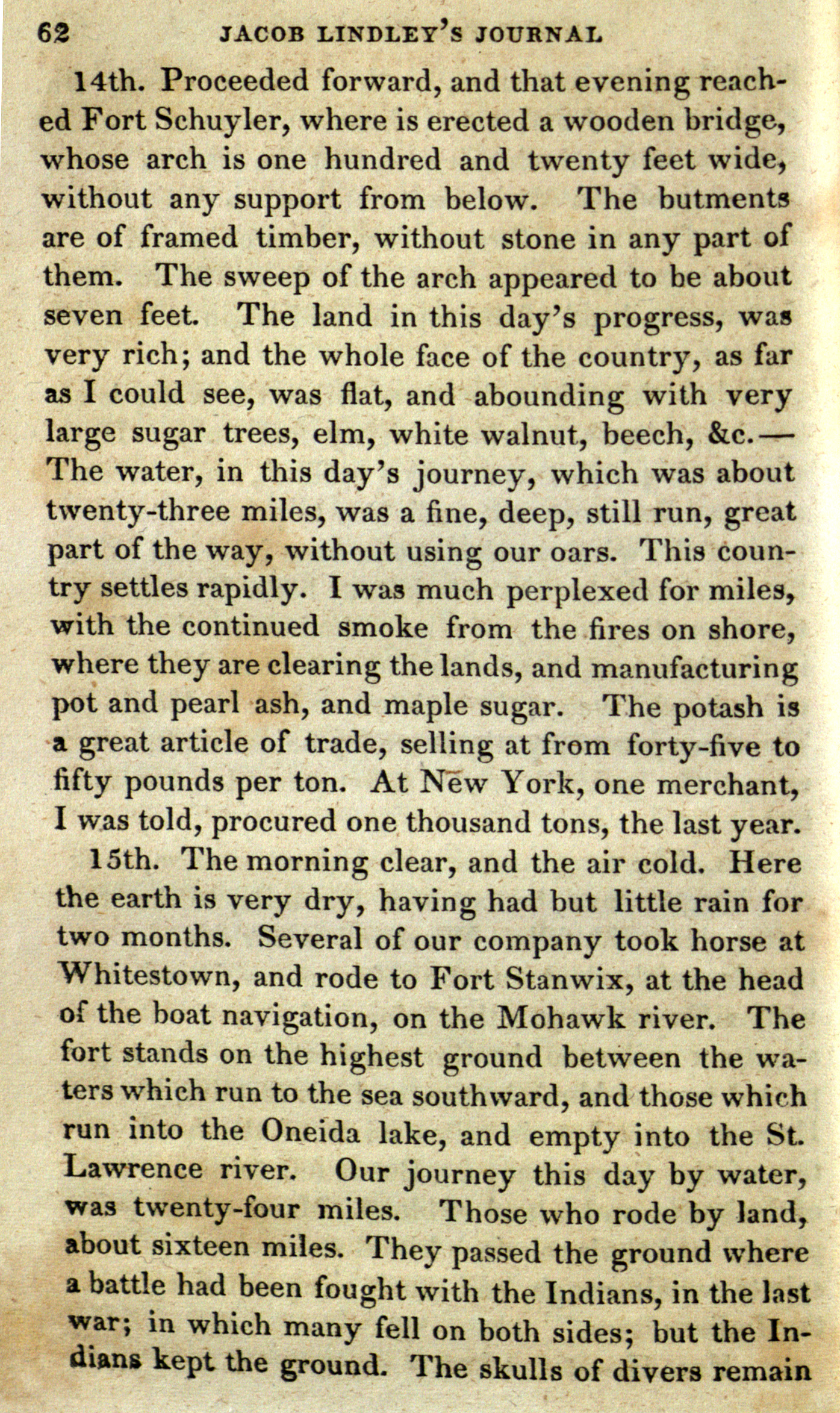Proceeded forward, and that evening
reach-
ed Fort Schuyler, where is
erected a wooden bridge,
whose arch is one hundred and twenty feet
wide,
without any support from below. The butments
are of framed
timber, without stone in any part of
them. The sweep of the arch appeared to
be about
seven feet. The land in this day's progress, was
very rich;
and the whole face of the country, as far
as I could see, was flat, and
abounding with very
large sugar trees, elm, white walnut, beech, &c.
—
The water, in this day's journey, which was about
twenty-three
miles, was a fine, deep, still run, great
part of the way, without using
our oars. This coun-
try settles rapidly. I was much perplexed for
miles,
with the continued smoke from the fires on shore,
where they
are clearing the lands, and manufacturing
pot and pearl ash, and maple
sugar. The potash is
a great article of trade, selling at from forty-five
to
fifty pounds per ton. At New York, one merchant,
I was told,
procured one thousand tons the last year.
The morning clear, and the air cold.
Here
the earth is very dry, having had but little rain for
two months.
Several of our company took horse at
Whitestown, and rode to Fort Stanwix, at the head
of the boat
navigation, on the Mohawk river. The
fort
stands on the highest ground between the wa-
ters which run to the sea
southward, and those which
run into the Oneida
lake, and empty into the St.
Lawrence
river. Our journey this day by water,
was twenty-four miles.
Those who rode by land,
about sixteen miles. They passed the ground
where
a battle had been fought with the Indians, in the last
war; in
which many fell on both sides; but the In-
dians kept the ground. The skulls
of divers remain

